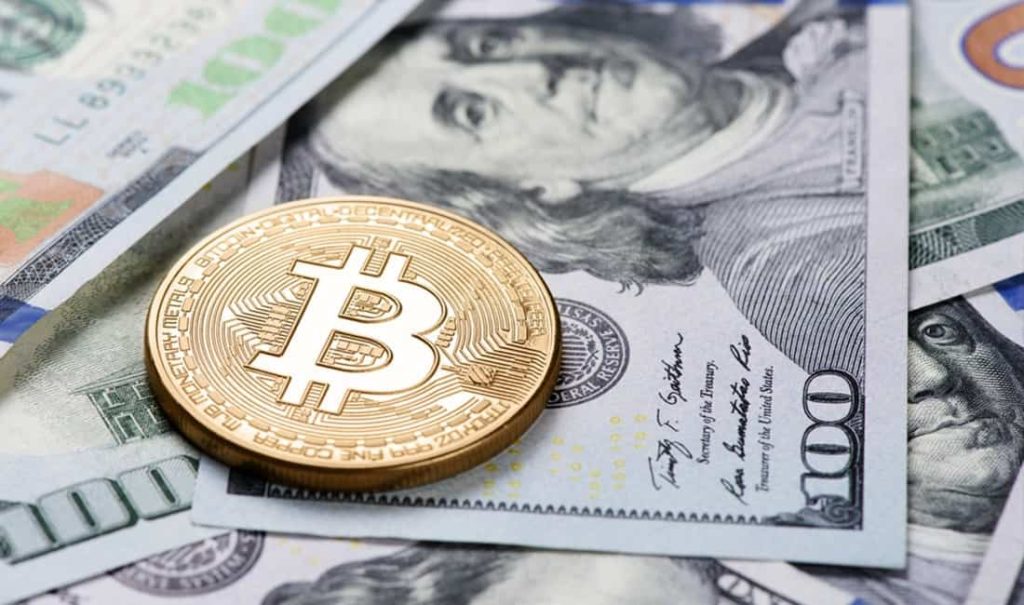
The cryptocurrency would have been an outstanding investment in 2017.
At the start of 2017, Bitcoin (BTC -1.37%) had been through some dark days as an asset. The cryptocurrency’s value peaked over $1,000 in late 2013 but dropped to between $200 and $400 for most of the next four years.
But it recovered and hit $998.62 at the start of 2017, meaning that an investor who bought $1,000 worth would have bought slightly more than an entire Bitcoin. Today, that initial $1,000 investment would be worth $22,800. The big question for investors now is whether Bitcoin can make those same returns again over the next six years.
Bitcoin’s return to prominence
First, let’s recall how exactly Bitcoin got to where it is today. The original crypto has certainly benefited as more money has flowed into cryptocurrency and digital assets. The initial coin offering (ICO) craze of 2017 – during which hundreds of new tokens were sold to the public, even if the utility of some tokens was questionable – brought more awareness to Bitcoin. But while many of the coins launched during that period suffered from severe price dips afterward, Bitcoin made it out largely unscathed.
The pandemic brought investors more money through stimulus funds and low interest rates, driving many to chase higher-risk assets like Bitcoin. That all led to a huge Bitcoin price spike in 2021. But the coin dropped steeply in 2022 as interest rates rose and investors sold off high-risk assets.
In June 2022, pandemic-era inflation peaked. Meanwhile, by the end of June 2022, Bitcoin had fallen to just over $20,000 — down more than 70% from the all-time high of $67,617.02 it hit in November 2021. As a result, the argument that Bitcoin might be used as an inflationary hedge fell apart.
The competition is stronger than ever
The inflation issue isn’t Bitcoin’s only problem, though. Competition in the cryptocurrency sphere is looking increasingly fierce. More and more tokens, exchanges, and technologies are improving upon the original Bitcoin idea and striving to make even more efficient forms of digital money. Ethereum (ETH -1.73%), for instance, was the first major blockchain to introduce smart contracts, which has made crypto intelligent in a way that Bitcoin hasn’t yet done at scale.
Solana (SOL -3.45%) took that to the next level, introducing a blockchain that can complete thousands of transactions per second for a fraction of a second each. If, like me, you think that new innovations and businesses will be built on top of the blockchain, then speed, cost, and capability are key elements of the technology.
The harsh reality is that Bitcoin is falling behind in these areas. If you’re looking for a simple store of value in crypto, then there’s an argument that Bitcoin might still be your best option for the time being. But I don’t believe that Bitcoin’s future is as bright as its past.
What’s the future of Bitcoin?
I doubt the next six years will be as good as the past six years for Bitcoin. Competition is steeper than ever, and more innovation is happening on other blockchains. Plus, that Bitcoin hasn’t been able to keep up as an inflationary hedge has really been a blow to the digital asset. When high prices rile the traditional market, Bitcoin’s trading pattern seems to follow growth stocks and other risky assets instead of acting as a true hedge against inflation.
Security and performance are an issue, too. A very small number of miners control half of the mining capacity for Bitcoin, and, when the price fell recently, they came under financial stress. Even publicly traded Bitcoin miners have seen their stocks and financial strength weaken dramatically. Since Bitcoin is still a proof-of-work blockchain, it requires miners to validate transactions. A large number of miners are needed to keep the blockchain secure and to prevent Bitcoin from being controlled by a single, small group. As Bitcoin falls in price and it becomes less profitable to mine Bitcoin, that security will be under a growing amount of pressure.
The next few years may not be anywhere near as good for Bitcoin as competing blockchains improve and Bitcoin’s provenance declines. Since the start of 2017, Bitcoin has been a huge winner. But that past performance doesn’t look like it will be continuing to the same extent. Even if cryptocurrency is the future of finance or data storage, I doubt it will be Bitcoin that holds the biggest market share. Rather, I’d bet that title will go to the token’s current competitors, such as Solana or Ethereum, that are continuing to innovate and drive the future.
























